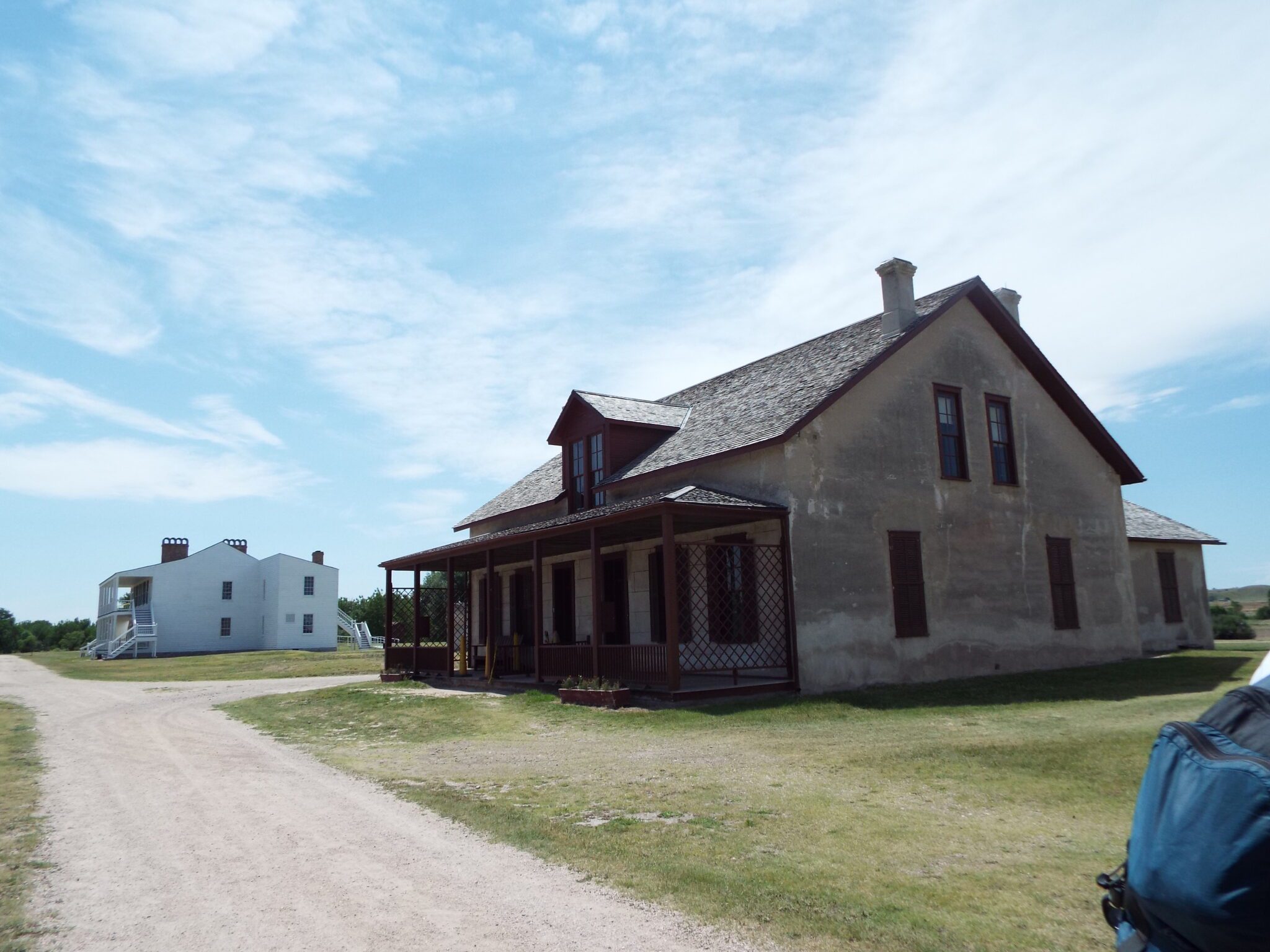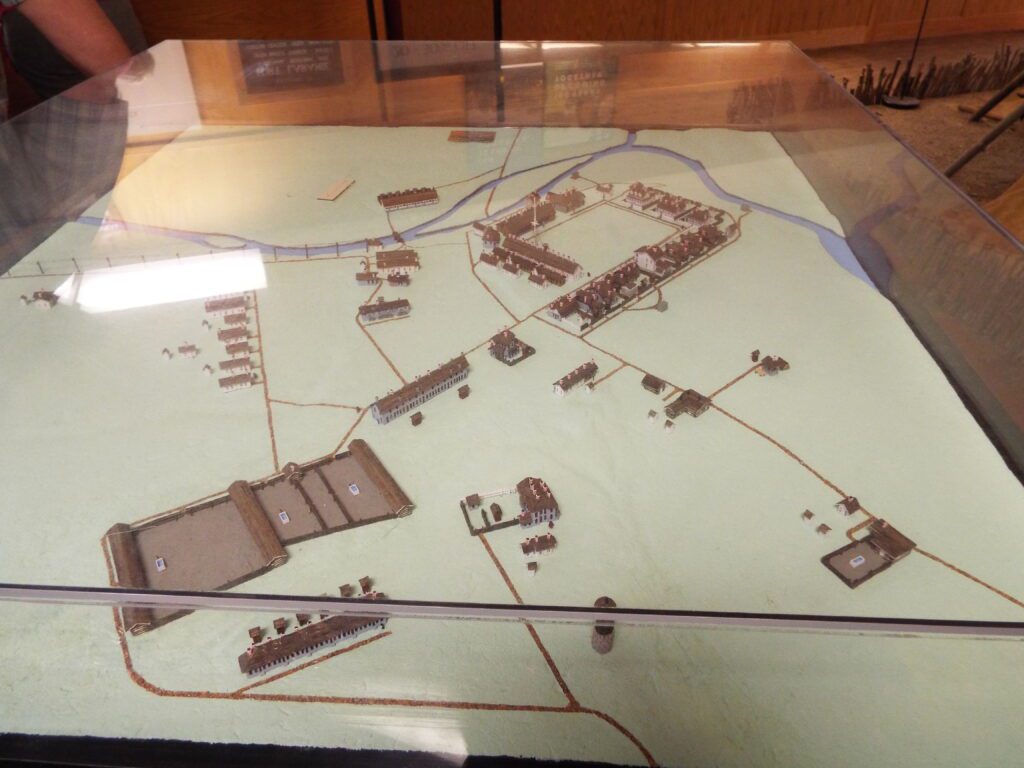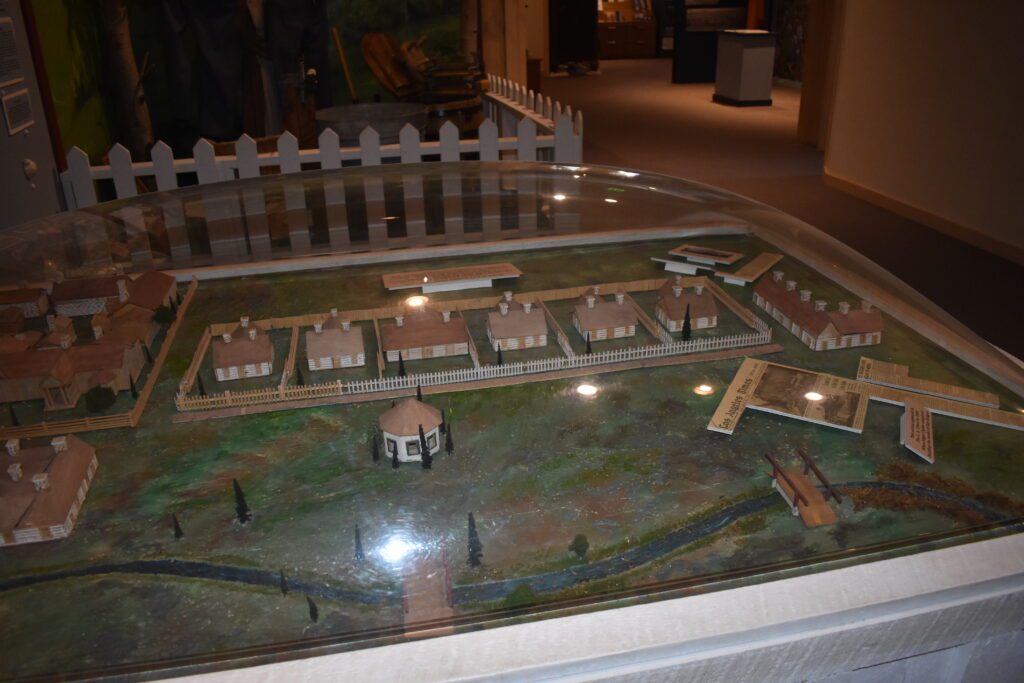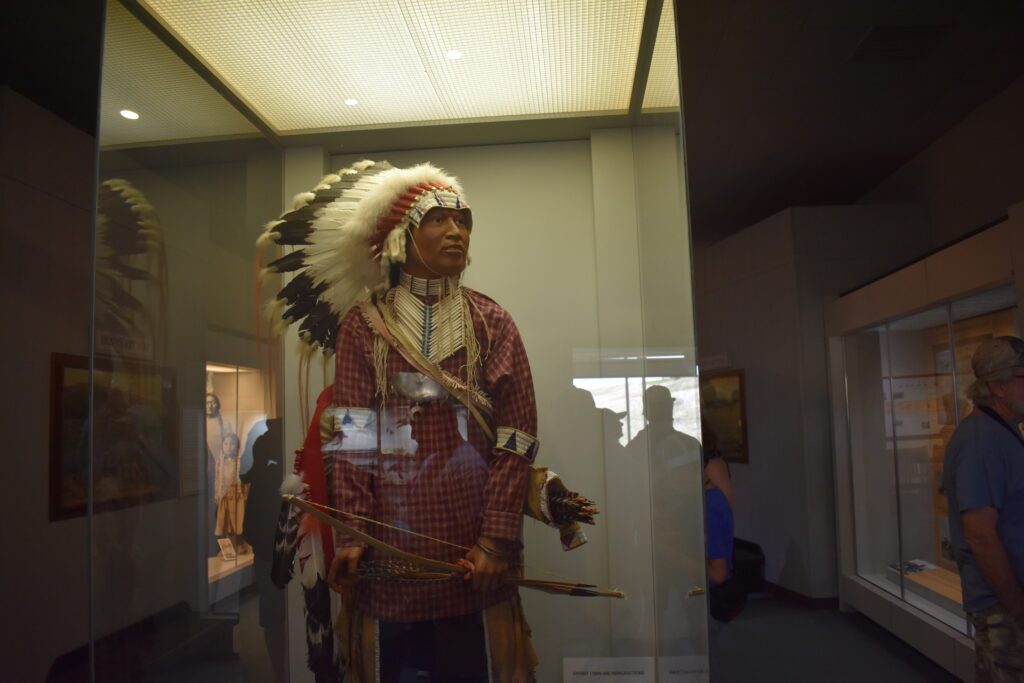News
Fort Laramie 1868 Peace Treaty

November 11 is Veteran’s Day, also called Armistice Day, which was the cease fire between the Allies and those aligned with Germany during WWI. November was also the month in 1867, when many of the Indian tribes came together at Fort Laramie to negotiate the Fort Laramie Treaty, which was signed on April 29, of 1868. Other treaties followed.
This is a part of Sheridan Counties history, as after this treaty Fort Phil Kearny was one of the forts that were destroyed as per the treaty.

Although this story was from the Cheyenne Sun on Feb. 22 of 1891, it gives a good overview of the treaty and what was expected of each party – The Fort Laramie Treaty – A Review of an agreement made with the Sioux in 1868 including a few of the signatures. Gen. Win. T. Sherman, whose remains were interred at St. Louis yesterday, and Gen. Alfred H. Terry, who died early this month, were members of the commission which negotiated a treaty with the Sioux at Fort Laramie in 1868 This was as important a public service as was accomplished during the notable careers of either of the great soldiers. They effected a peaceful agreement fair to the reds and creditable to the government. This treaty is printed in the Compiled laws of the territory of Wyoming. Published in 1876 by H.Glafcke, under the direction of J. R. Whitehead. The Indian names are a feature of the treaty.

Map of the Bozeman Trail, at Fort Fetterman
Here are few of the titles, with translations:
Mazaponkaska, Iron Shell; Wahpatahah, Red Leaf; Tahshunkacoquipah, Young-Man-Afraid-of-His-Horses; Shatonskah, White Hawk; Hehwongechat, One Horn; Ohponahtaheinanne, The Elk that Bellows Walking; Mahtononpah, TwoBears; Matohnaskinya, Mad Bear; Makhpiahlutah ,Red Cloud – Sloan’s Lake is named for him. Wakiahwechashah., Thunder Man; Cokannyaya, The-Man-Who-Goes in-the Middle; Matocawaweksa, Bear Rib; Cautepeta Fire Heart; Waumdikte, The-One-Who-Kills Eagles; Tokamyauka, The-One-Who-Goes- Ahead-Ruuning; Tatankawakinyau, Thunder Bull.; Mawataunihauska, Long Mandan; Caukpeduta, Red War Club; Cankaga,The Log; Henapinwanica, The-One-That Has Neither-Horn; Wamlupiluta, Red Plume; Wapahshaw, Red Sign and Wahkootay, Shooter.
Nicholas Janis and Father La Framboise were the interpreters. Father De Smet, S. J., missionary among the Indians, frequently signed as a witness.
The first paragraph of the opening article of the treaty with substantially; all the Sioux is as follows: “From this day forward all war between the parties to this agreement shall forever cease. The government of the United States desires peace and its honor is pledged to keep it. (The Indians desire peace and they now pledge their honor to maintain it.)
It was the privilege of any Indian above the age of 18 to have 320 acres of land, a cow and a yoke of oxen. The Sioux pledged themselves to compel attendance at school of every child between 6 and 16, and the government promised a school for every thirty pupils. The farmers were to receive an out “fit of implements and seeds to the’ value of $100 when starting and $26 worth of tho same annually for three years.
Gaze on the almost sockless provision for clothing the savages. “For each male person over 14 years of age, a suit of good, substantial woolen clothing, consisting of coat, pantaloons, flannel shirt, hat and a pair of home-made socks. “For each female over12 years of age, a flannel skirt, or the goods necessary to make it, a pair of woolen hose, twelve yards of calico and twelve yards of cotton domestics.
“For boys and girls under the ages named, such flannel and cotton goods us may be needed to make each a suit as aforesaid, with a pair of woolen hose for each child. The duds issue to be made once a year. Idle Indians wore to get $10 a year in cash and farmers $20. The food ration was this for every Indian over 4 years: One pound of meat, one pound of flour a day. Of course at that time the country was full of game and it is expressly stipulated that the Indians should have the right to hunt buffalo on the North Platte and Republican and most anywhere else. Those things were to be especially observed by tho Sioux.
That they will with draw all opposition to railroads now being built on the plains. That they will permit the peaceful construction of any railroad not crossing their reservation, that they will not attack any persons at home or traveling, nor molest or disturb any wagon trains, coaches’ mules or cattle belonging to people of the United States or persons friendly therewith that they will never capture or carry off from the settlement white women or children. That they will never kill or scalp white men or attempt to do them harm.
The commission agreed to furnish to the Indians physicians, teachers. carpenters millers, engineers farmers and blacksmiths. “It is agreed that the sum of $500 annually, for three years from date, shall be expended in presents to the ten persons of said tribe who in the judgment of the agent, may grow the most valuable crops for the respective year.”
All the country between the North Platte River and Big Horn mountains- Including the Black Hills, was to be abandoned by the whites. This agreement was early violated.

Model of Fort Bridger at Fort Bridger State Historic Site
The next year the same commission went to Fort Bridger and made about the same treaty with the Shoshones mid Bannocks It was signed by Washakie and many others and stuck pretty well.
(One of the violations was in 1874, Gold was discovered in the Black Hills and nothing could keep out the stream of immigrants that came searching for riches)
Even before the treaty was signed, there were problems. Perhaps due to many of the Native American’s were not all together on board with the treaty, and many chiefs did not sign the treaty.
The Sweetwater Mines (Uinta, Sweetwater Mines), April 8, 1868 – We clip the following from the Cheyenne Leader, of March 30th, as matter of considerable interest to those of our readers bound for the Sweetwater country. Although the scene of ‘Poor Lo’s” present operation is some 200 miles to the east of our diggings, yet it will be advisable for parties going into the mines to go well armed and to keep bright look out for the peace commissioners’ “pets”:
“During the past week Indian hostilities have been commenced, murders have been committed, settlers’ houses have been burned to the ground, ranches and homes have been abandoned, and the settlements in the vicinity of Fort Laramie, and from there to Fort Fettermen have been plundered by “Lo,” the friend of Indian Commissioners; and the country generally, particularly, and thoroughly been put in order for the reception of the new Commission which is to meet at Laramie, on the 7th of April.
Thomas Butler, and E.H. Brown, Esq., the former of whom occupied and owned ranch about six miles this side of Fort Laramie, arrived in this city yesterday, and bring an account of Indian difficulties which have been commenced from Laramie to Fort Fetterman, and which promise to be of most serious and extensive character. They report that all the ranches between these two posts have been burned, and that seven citizens have been murdered. besides some soldiers the number of which it is impossible to ascertain at present.
They further state that all of the old settlers and mountaineers of that district men who, as class, are not easily frightened by Indians believe that the Indians are leagued together for general war of extermination of that and other frontier districts, in consequence of which they the settlers have fled, some to Fetterman, and others to Laramie, for protection, and that the major portion of them will probably come to this city, as soon as possible, some being already on the way.
Mr. Butler had four of his mules stolen, and his partner lost five in the same manner, alter which they concluded to abandon their ranch and seek safety in Cheyenne. Three men were killed at one ranch between the two forts, while four others, who occupied the same place, were told alter lighting two days, that if they would leave they should not be attacked, at least until after their arrival at Fort Laramie. It is believed by the mountaineers that the Indians intend to advance to the end of the track, and after killing and destroying all they can, to swing round to Chugwater, and destroy all the settlements on that stream, after which they will probably be prepared for anything, There can be no question that during the coming summer the Plains to the west, north and east of this city will be the scene of the bloodiest and most extensive Indian war which the United States has even known.
Even if many of the tribal leaders signed the peace treaty in April 1868, Red Cloud refused to sign on the whitemen’s promises alone. He wanted more concrete proof and asked that the forts along the Bozeman be burned to the ground. Red Cloud finally made his mark next to his name, on November 6, 1868. Fort Reno, Fort Phil Kearny and, as we see in this clip, Fort C.F. Smith, were burned.

On Display at Custer Battlefield Museum
The Frontier Index (Green River), October 13, 1868 –Indians in Montana.—A correspondent of the Helena (Montana) Herald, writing from Bozeman City, August 23th, says the day that Major Burt, with the troops under his command, abandoned Fort Smith, the Crow Indians also left, wending their way up the Big Horn.
On the day following the great Sioux Chief, Red Cloud, with large band of warriors, came to the Fort, plundered it, and then commenced their work of devastation by making of the post a huge bonfire. They destroyed what the fire would not—stoves, machinery and hardware of all kinds were made entirely useless by being broken.
As the train of McKenzie & Renshaw was being put in motif on this side of the Big Horn, Red Cloud, with band of about three hundred braves, crossed over, and being acquainted with one of the members of the train, told him that he would not scalp any of their number, but that he proposed to go quietly through their train and help him self to anything he desired. To this no remonstrance was made, and Red Cloud took everything which pleased his majesty’s fancy.
And this is from The Cheyenne Daily Leader, Thursday, Oct., 10, 1867 Indians Speeches We give below several of the speeches of the royal red-skins, as specimens of their eloquence, and expressing their wants in their own manner. Pawnee Killer says he has an idea, and Swift Bear expresses it when he demands powder and ball, and these harmless presents are duly presented to the Lo family by the considerate commissioners of the Great Father.
Swift Bear’s Speech. “My Friends: You have been talking with me the last two days. You have said not one bad word in all your speeches. All you spoke to me was good. You told me your great grand-father sent you here to fix up all that was bad. You have told me so. You see me standing here as a Sioux. All the red men talk straight. I was here and camped here, and was friendly to the whites. I thought I brought the red men here to make peace. I told them what you told me. You have made me a lie. I understood there were six peace commissioners come here to make peace. I made these men lay down their arms, and come to the council to make peace. I told them so. They are here. After doing all this work, I thought you would take pity upon them, and give them powder and ball. My friends, take pity upon me this day. I have been friendly. Give these men some ammunition. They don’t want much. We won’t kill you; we want powder and ball to kill game as we go to our villages. I am an Indian, but I believe what the pale-face tells me. That’s) all I have to say.”
Man-That-Walks-Under-The-Ground speech – Man-that-walks-under-the-ground, a big chief of the Ogalalla Sioux, adorned with eagle leathers, and dressed in a fancy deer skin coat, ornamented with beads, and fringed with horse hair, then said, as he approached the commissioners : The white man takes off his hat; I will do so also, as I am going to speak (saying which he dashed his hat and plumes on the ground) Look at me well. [Whispers of “good.] I am Ogalalla. I was born and raised on this ground. Now l am getting to be a big man. I am married. My heart heats strong, but I will do nothing out of the way. My Great Father has sent you here. We have come here to meet you to-day us invited by Spotted Tail and Big Bear. I am a red- skinned man. L am poor. You are rich. When you come to our villages we always share with you. Where is the living (present) I am to get? What am I to do? This dayI ramble around with nowhere to go. I cannot make powder nor can I make ball.”
Pawnee Killer’s Speech. ” I am not a chief, but I am a warrior. My Great Grandfather may have some ideas in his head, but I am a warrior, I may have some also. I am not alone here. I have plenty of braves with me. When we meet in large councils we always do something, those people from whom I came have been doing very wrong this summer, but we heard you were going to make peace. I come here. I was raised upon buffalo meat. I want to live upon it. After a battle when two nations meet and they shake hands, they ought to be at peace. I have said it.”
Big Mouth’s speech. ” I am going to speak to you, but it will not be a long one. I am a Sioux. Near Cheyenne river and Laramie my people have lived, and my people want to live there to get game for their children. When the Great Father sends you to make peace, who are the Indians that help you to make it? Who but Spotted Tail, Swift Bear and Big Mouth? Let these people have some ammunition and make their hearts glad.

The Indians basically wanted to live the same way they had lived for generations, but the white settlers wanted the land and the gold and the right to cross the land and build roads and the ‘Iron Trail.” The two ideals could not co-exist, and the Indians were forced to give up their lifestyle and now live on reservations.
This small item from The Frontier Index (Laramie/Fort Sanders), April 21, 1868


